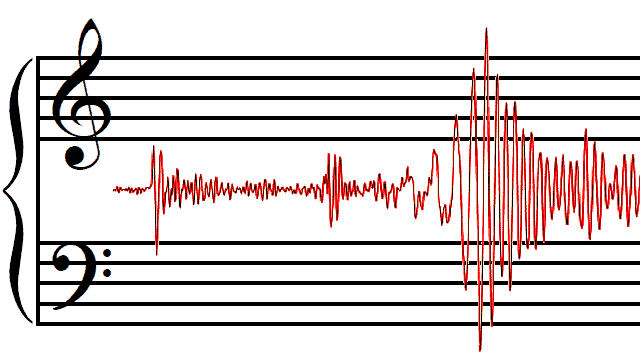Earthquakes are vibrations; we all know that. The little ones we get all the time in California occur in the form of high-frequency vibrations—sound—as much as the low-frequency vibrations we perceive as shaking. People typically describe them as being like the sound of a truck rumbling by or a large door slamming.
Large earthquakes are another matter. Although people report loud roaring sounds like rockets or jets flying nearby, the great majority of a large quake’s energy is at very low frequencies. That is, most of an earthquake’s vibrations are too slow for our ears to hear. Wouldn’t it be interesting to be able to hear those vibrations?
A number of scientific programmers have been playing with this idea, and the results are tantalizing. Probably the best way to introduce them is to point you to a page on sonifyer.org, where two days’ worth of shocks and aftershocks of the giant Japan earthquake of March 15, 2011 are presented in a two-minute sound file. When sped up 1440 times, the earthquakes sound something like a group of guys pounding stuff in a junkyard with big rubber mallets, or monkeys trying to imitate a steel-drum band.
It’s interesting and entertaining stuff. A good place to play with a seismogram—the “written” record of an earthquake—is at the website of the Scripps Institution of Oceanography, near San Diego, where its SIO Visualization Center has a musical seismogram app. A recording of many small earthquakes at Mount St. Helens can be played at four different speeds, and three different records are presented: horizontal ground motions, vertical ground motions, and infrasound. Slow playbacks sound like thunder and fast ones sound like jet noise, and all of them are based on the same signal. It makes you hear everyday noises differently. It makes you wonder about the underlying physics of a lot of different things in nature.
Scientifically, the jury is still out on how useful these things are. I think they’re good teaching tools. The U.S. Geological Survey’s Listening to Earthquakes pages are the best example. It presents many different seismograms from different events and explains how various factors affect them, such as distance from the quake, the type of rocks nearby and so on.
